The growing dominance and reach of streetwear have solidified its place in fashion since Virgil Abloh, renowned for his streetwear brands Pyrex and OFF-white, was appointed as the creative director for Louis Vuitton in 2018. Having transcended from being relatively niche to mass and luxury marketability, the style—with roots in hip-hop, graffiti, skate, and surf culture—has become an undeniable statement for consumers who’ve increasingly pivoted to more comfortable wear with access to a wider breadth of independent designers on social media.
Various streetwear staples have burst on the scene since the most popular trademarks such as Supreme, Stüssy, and BAPE had built a large consumer base and set the stage for streetwear early on. Currently, entries from the Latine-owned brands, like Awake NY, Kids Of Immigrants, Born X Raised, and 424 on Fairfax, to name a few, have further broadened streetwear’s globally diverse culture through their collections.
The HBO Max competition series The Hype features up-and-coming streetwear designers hailing from various states throughout the US to compete in unique challenges. The show is modeled after long-running competition series like Project Runway and Making the Cut, but with a streetwear twist. It emphasizes creative direction, brand awareness, and marketability over sew-savvy and technical capability—although that still comes into play. It’s judged by Union Los Angeles owner Bephie Birkett, celebrity wardrobe stylist Marni Cinafonte, and the Grammy-nominated rap group Migos member Off-set. The participants vie for a chance to win a grand prize of $150,000, featured drops on the web-resale streetwear shop Stock-X, and to receive the ultimate streetwear fashion industry “cosign.”
Los Angeles contestant Camila Romero is a Colombian-American designer who merges an unconventional aesthetic with her street style meets burning man sensibility. She often remarks on representation for the Latine community and has openly shared her immigration status as a DACA recipient by advocating for Dreamers, as well as eco-conscious sustainability in fashion. Having only launched her “immigrant women-owned ethical label” DeadBlud in 2020 with her partner Marina Mendes, the novice often impresses the judges. They make note of her designs as “very Camila,” reinforcing the strong signature that the Colombia-born designer passionately imbues in her pieces—which notably garnered accolades from fashionista rapper and guest judge Cardi B in one of the design challenges.
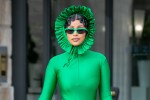
Remezcla caught up with Romero for insights on her brand’s take on streetwear, her experience competing on The Hype, and what’s next for the fashion-forward designer.
Tell us about yourself and your streetwear brand.
I came to the States when I was 6-years-old. I grew up in Palmdale, California, and moved to LA for college. I’ve been in LA for about 7 years now. Marina is my business partner for our brand DeadBlud. We have the same roles within our brand but we both bring different styles to the table. She does a lot of what I would call more classic designs and I do more of the “crazier” kinds of designs. We’re able to give a really good balance within the brand to make it something that artists would like to wear but also something everyone can feel comfortable wearing without drawing in too much attention.
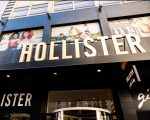
What was the process like for starting DeadBlud?
I always had visions and sketches I would create for what I wanted to make for myself, and I’ve worked for many different brands out here in LA. I started by literally just doing it and getting my team together. I was able to use all the connections I had from being immersed in the fashion world beforehand to my advantage by asking them to give me advice on how to move forward. Marina and I launched DeadBlud four months after we decided to become business partners in February 2020. It’s all still pretty new and we’re definitely learning as we go. On the show, I felt like such a rookie because everyone had been doing this for years.
How did getting cast for The Hype come about?
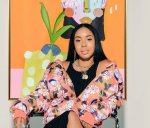
According to the producers, I was the last one to be cast. My sister told me that she was at a music video shoot wearing our sweatsuit. Someone came up to her and asked her what brand she was wearing because they were casting for a designer reality TV show. I thought it was a sewing competition, which kind of threw me off because I didn’t feel at all confident enough to go into that. We basically just design the products and do creative direction for the brand and have our team of sewers in LA constructs the garments. Somehow, the producers ended up getting in touch with us and explained that it wasn’t just a sewing competition and that there were many different styles of designers, illustrators, and creative directors being cast. That convinced us to submit our application. Originally, both Marina and I were cast together but then they ended up telling us that only one of us could be on the show, which was a little too much pressure for us to decide, so we let them go ahead and do it for us.
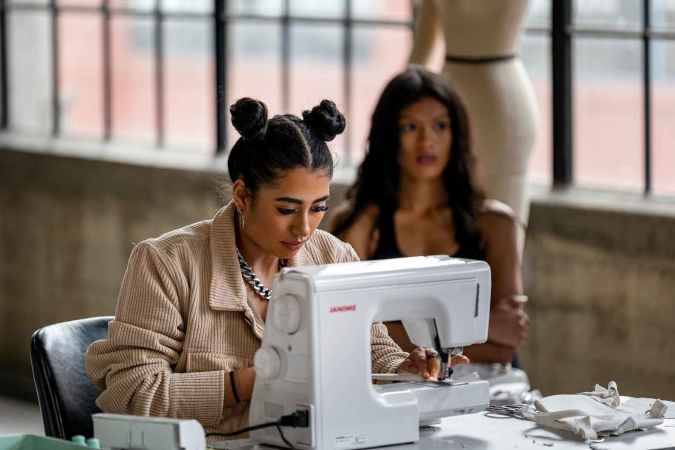
Even though tech packs were utilized, each challenge still had a sewing requisite. Was that a big challenge along with having to create in such a short time frame?
It was hard but I feel like the pressure definitely helped me grow. It was like a crash course of fashion within the five weeks we were filming. I think I learned more in those five weeks than I have in a whole year. That was probably the best way for me to really dive into my artistry and realize my potential and that I have what it takes to take the brand to the next level, and even do my own sewing and make my own creations. It was my first time making a jumpsuit, first time making a trench coat, my first time making a full denim jacket, the first time making a whole outfit in a two day span—I have so much love for the production aspect and that experience helped me grow so much as a designer.
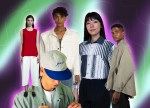
Did requirements to design for a specific person or theme push you out of your comfort zone or were you able to find different ways of expressing a signature style?
I’m proud of myself for staying true to my vision, what I believe in, and my specific sense of fashion. I think, in every episode, you can tell which pieces are mine. As an artist, that’s a really huge goal. Like in the music industry, you recognize the best people the second you hear their voice, the same is true with fashion. That’s kind of what I’m trying to do.
You described your designs as being inspired by a Burning Man, is that also true of your brand, and what are some of your main influences?
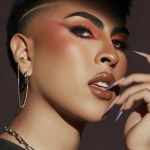
On the show, I describe it as Burning Man because I feel like that community is based on feeling free and having freedom of expression. I think that’s specifically what I meant. I don’t want to put my brand in a box of being only a festival-style brand because I look at it as something that’s so much more than that. My influences come a lot from my favorite decade, which is the 2000s and ‘90s. I’m obsessed with all of the streetwear that we would see back then. I love morphing the two timelines together with the future-sick-vibes we see in today’s streetwear, as well as bringing comfortability and sexiness together for genderless streetwear.
What was it like to get feedback from such well-renowned visionaries in the fashion and music industry? Any main takeaways from their advice?
I definitely took in everything that each one had to say. Like in the Offset challenge where we had to design for a specific artist. Right before the show came out, we worked with Lady Gaga’s stylist, Nicola Formichetti. He came to our pop-up in L.A. He loved our stuff and got some of our clothes on Gaga. Now we’re in talks with him to get a custom collaboration with her and I’m taking what I learned on the show into my daily life, which will stick with me forever.
Are there any other dream artists you’d like to design for or collaborate with in the future?
I’m Colombian so I would die if I got J Balvin, Kali Uchis, and Karol G. They’re some of my favorite reggaetón artists, so I definitely would love to design for them one day. There are tons of artists, I mean Gaga was something that for me was so insane that it even happened because I’ve been listening to her since forever.
One of the challenges called for choosing a specific cause to advocate for. You seemed torn between sustainability and immigration. What ultimately informed your choice?
In that episode, it was so hard for me to pick just one. When they told me to just pick one, because standing up for too many things can get lost in translation, I was like: “No, that’s who I am!” Ultimately, the reason I chose to advocate sustainability over Immigration/DACA/Dreamers is that if we don’t have a planet, then everything else absolutely doesn’t matter. So I needed to stand up for that on the show to educate people about how important it is in fashion. Like Bobby Hundreds said on the show, there are so many clothes in the world, we really don’t need any more clothing but it’s about making better choices with everything that’s affecting us and that could affect our future.
How do you feel about increased attention towards immigration and having more Latine representation in various industries, specifically streetwear?
Even though I chose sustainability for that particular challenge, I felt like my entire storyline on the show was very vocal about being a DACA recipient and standing up for Dreamers and the Latin community. It’s 1000% important to be proud because you don’t know who might feel like they can relate to your situation, or about carrying a certain stigma. Growing up, I always felt like I couldn’t relate to anybody about this and wished that it was something that wasn’t as taboo to discuss as it was for me. Marina and I are both immigrant women who have come to this country to pursue our dreams and are trying to make it happen no matter the circumstances. I think that’s a powerful message to represent in our brand and to be guides for other streetwear designers in our community.
Any advice for upcoming streetwear designers on how to get their start?
Follow your gut instinct and don’t feel like you’re never ready for something because I think that was always my excuse. “I’m not ready for it, I’m not ready to do this.” You should just go for whatever it is in life that makes you happy and makes you passionate without fear, and learn along the way. Because that’s what life is about, tripping and falling, getting back up, and getting better at whatever it is you want to accomplish. So live without fear and just dive in and do it.




